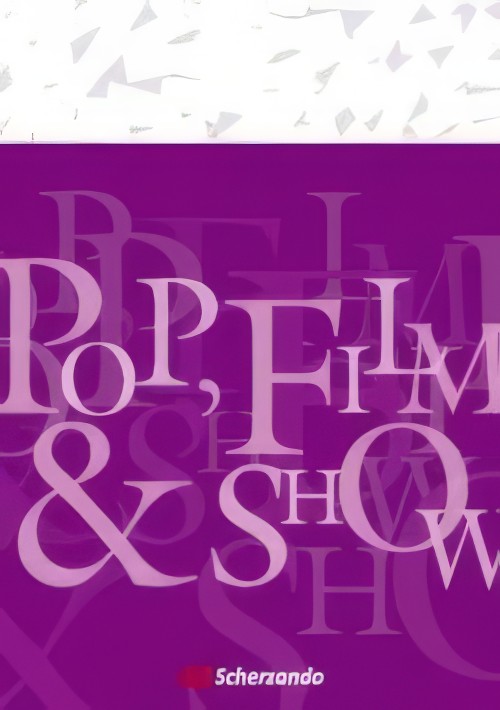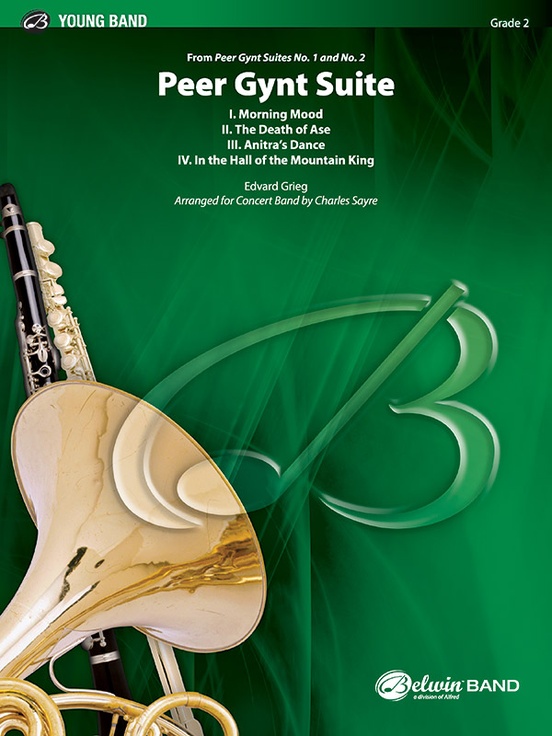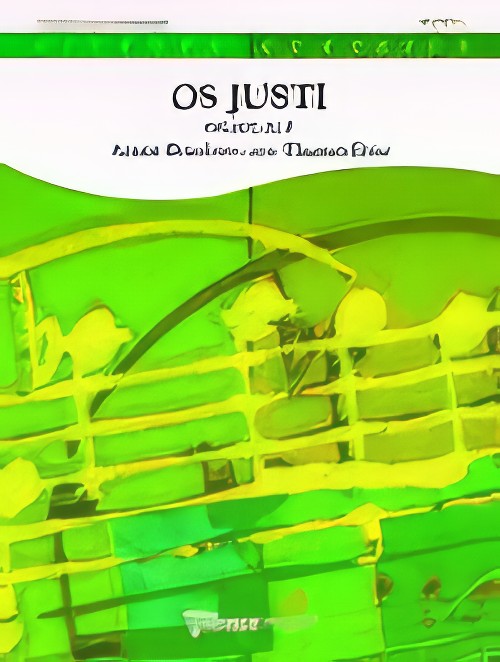Results
-
 £74.99
£74.99Goodnight Saigon (Concert Band - Score and Parts) - Joel, Billy - Foster, Larry
Billy Joel began piano lessons when he was only 4 years old. At the age of 13 he discovered rock n roll and went on to produce countless hits in both rock and gentler styles. With this arrangement by Larry Foster De Haske has added on of Joel's most beautiful ballads to the concert band repertoire.Duration: 4.00
Estimated dispatch 7-14 working days
-
 £89.10
£89.10From the Eye of the Storm
Mississippi composer, Ayatey Shabazz is a survivor of hurricane Katrina who lost both his home and the school where he taught to the storm. Soon after the storm was over Shabazz composed this stimulating and descriptive composition that explores the wide range of events and emotions he experienced during the tragic hurricane. Full of remarkable music that is sure to challenge your students, it is also a superior programming choice for better bands! Very highly recommended!
Estimated dispatch 7-14 working days
-
 £74.99
£74.99Hot and Spicy Wind Band Set (Score & Parts)
The source (sauce!) of inspiration for this work was somewhat unusual. Whilst on tour with a youth brass group, Kazys Daug?la ate a Piri-Piri salad that had a wickedly hot sauce. He jokingly told his fellow band members that one day he would write a piece to celebrate this mouth watering experience. The result was this Hot and Spicy piece garnished with a light mambo rhythm! 0:02:45
Estimated dispatch 7-14 working days
-
£104.99
The Great Gate of Kiev Wind Band Set (Score & Parts)
The Russian composer Modest Mussorgsky (1839-1881) was self-educated to a large extent but went on to become one of the ?Mighty Five? which also included Balakirev, Cui, Borodin and Rimsky-Korsakov. Today he is considered the innovator of Russian music par excellence. He composed Pictures at an Exhibition in 1874, inspired by ten pictures produced by his then recently deceased friend, the Russian architect and artist Victor Hartmann. The French composer Maurice Ravel made an orchestration of Mussorgsky?s composition in 1922 which is now more well-known and more performed than the original piano suite. For his transcription of Pictures at an Exhibition, Tohru Takahashi made use of the original piano composition by Mussorgsky. The Great Gate of Kiev, issued here separately, is probably the best known melody from this classical masterpiece. 0:05:45
Estimated dispatch 7-14 working days
-
 £58.50
£58.50Suite - Edvard Grieg / arr. Charles Sayre
Edvard Grieg's early musical training took place in Germany, but philosophical constraints sent him back to his native Norway, where he began what is now referred to as the Norwegian School. He is best known for his , No. 1 & No. 2, originally written as orchestral suites and as incidental accompaniments for Ibsen's epic drama. This sparkling scoring includes and . (4:56)
Estimated dispatch 3-5 working days
-
 £78.00
£78.00Coronation March - Giacomo Meyerbeer
Giacomo Meyerbeer (1791-1864) was a German opera composer of Jewish origins, who has been described as perhaps the most successful stage composer of the nineteenth century. From 1831 until his death, he remained a dominating figure in the world of opera. His contemporary Hector Berlioz summed up his public career claiming that he 'has not only the luck of being talented, but the talent to be lucky'. His works made him the most frequently performed composer at the world's leading opera houses in the nineteenth century. Giacomo Meyerbeer composed his opera Le Prophte in 1849. In this opera a coronation is preceded by a splendid march. Although the opera itself is rarely performed, the Coronation March has gained a place in the concert repertoire.Franco Cesarini's arrangement for concert band of the Coronation March stands out for its skillful instrumentation which underlines the powerful sounds of this classic concert march.
Estimated dispatch 7-14 working days
-
 £104.50
£104.50Dream Of Abraham - Daniel Bukvich
The dream... always... whenever I sleep... the dream...shouts become whispers... Those are the words of Abraham Zapruder as he speaks of his own reaction to the film he made of the assassination of John F. Kennedy. This work incorporates the unique and creative writing style found in the Bukvich Symphony No. 1 in bringing us this chilling and haunting representation. A most remarkable work. (13 minutes 20 seconds)
Estimated dispatch 7-14 working days
-
 £84.99
£84.99Os Justi - Anton Bruckner
Anton Bruckner is probably best known today as a symphonist however he was also a significant composer of religious works, motets and masses, and the composer of the great Te Deum. These choral works portray equally as much of Anton Bruckner's power as his symphonies. With his unique gift for unlocking the secret and beauty of choir singing he was a true master in this genre. This arrangement for concert band by Thomas Doss retains the character and homogeneity of the original choral work and is a stunning addition to the concert band repertoire.
Estimated dispatch 7-14 working days
-
£332.99
Tales & Legends - Etienne Crausaz
This three-movement work by the Swiss composer Etienne Crausaz reflects three true stories and fascinating legends from the Middle Ages. The first movement tells the dramatic story of the 'witch' Catherine 'Catillon' Repond (1662-1731). She was the last woman ever to be executed for sorcery. In the second movement, the famous court jester Girard Chalamala occupies centre stage. This jester, the last one at the castle of Count Greyerz, could make everyone laugh. The third movement tells the story of Count Michael. He went down in history as a spendthrift bon-vivant. His burden of debt became so high that he did a moonlight flit and never came back!
Estimated dispatch 7-14 working days
-
 £84.99
£84.99Os Justi (Concert Band - Score and Parts) - Bruckner, Anton - Doss, Thomas
Anton Bruckner is probably best known today as a symphonist however he was also a significant composer of religious works, motets and masses, and the composer of the great Te Deum. These choral works portray equally as much of Anton Bruckner's power as his symphonies. With his unique gift for unlocking the secret and beauty of choir singing he was a true master in this genre. This arrangement for concert band by Thomas Doss retains the character and homogeneity of the original choral work and is a stunning addition to the concert band repertoire.Duration: 3:45
Estimated dispatch 7-14 working days
